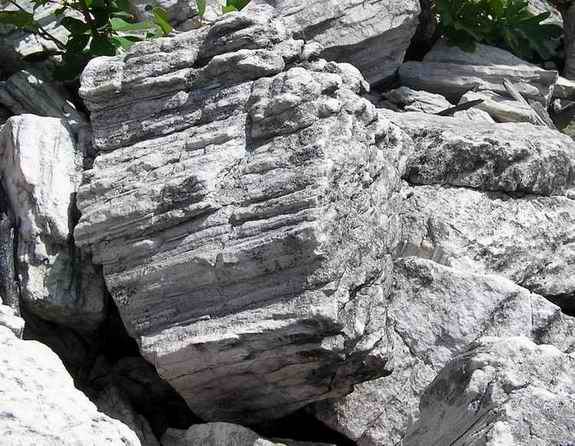|
Skolithos ichnofossils are trace fossils (ichnos is Greek for footprint). They are evidence of faunal activity as opposed to regular fossils, which consist of molds or casts of skeletal components or body impressions. A trace fossil is a sedimentologic or lithologic impression attributed to activity of an animal or plant. Ichnofossils are divided into categories according to the type of activity indicated; locomotion (Repichnia), resting (Cubichnia), dwelling (Domichnia), feeding (Fodinichnia) and grazing (Pascichnia). Skolithos ichnofossils are of the dwelling, or Domichnia type, which can include burrows, borings, or other imprint type indications.
The primary use of trace fossils is in the interpretation of the paleoenvironment. An ichnofacies is a group of ichnofossils distributed over a wide enough area to characterize the environment. Ichnofacies are distinguished in type by their predominance in fresh or salt water and in their distance from the shoreline or littoral. They range from the Scoyenia ichnofacies which may be footprints on firm ground to the Nereites ichnofacies which are typically grazing traces in deep water offshore. The Skolithos ichnofacies are characteristic of soft intertidal or shallow subtidal marine environments.
The Harpers and Erwin (Antietam) Formations are characterized by thick-bedded quartzite in which dense ichnofacies of Skolithos tubes are present. It was at one time hypothesized that these were plant stems or were caused by rising gas bubbles. It is now believed that they were caused by phoronid worms, a phylum of marine invertebrates with an elongated, nonsegmented body that burrow in the sand or mud. This indicates that the paleoenvironment of these formations was a tidal zone, which supports the geologic theory that the quartzite beds were formed by the erosion of the Grenville Mountains about 500 million years ago. |
